What is a Transvaginal Ultrasound for Cows?
In the evolving world of modern livestock management, reproductive efficiency plays a pivotal role in the profitability and sustainability of cattle operations. Among the many diagnostic tools available to veterinarians and farmers, transvaginal ultrasound stands out as a precise, minimally invasive, and highly effective method for reproductive evaluation in cows. But what exactly is a transvaginal ultrasound for cows? How does it work, and why is it used? This comprehensive guide explores the principles, applications, benefits, and best practices surrounding this vital reproductive technology.
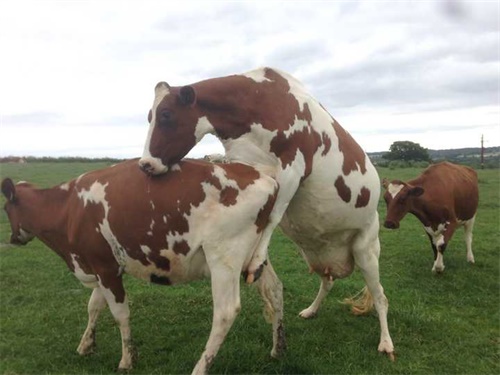
Understanding Transvaginal Ultrasound
Transvaginal ultrasound, also known as transvaginal ultrasonography or TVUS, is a specialized imaging procedure in which a linear or sector probe is inserted directly into the cow’s vagina to visualize internal reproductive organs. Unlike transrectal ultrasound — the more common approach in bovine medicine — transvaginal ultrasound provides direct access to the ovaries and uterus through the vaginal canal, offering high-resolution images of follicles, corpus luteum, and uterine structures.
This technique is particularly valuable in advanced reproductive programs such as:
-
In-vitro fertilization (IVF)
-
Oocyte pick-up (OPU)
-
Follicular aspiration
-
Ovum collection and embryo transfer
-
Diagnosis of cystic ovarian conditions
By enabling real-time observation of ovarian and uterine status, TVUS empowers veterinarians and technicians to make informed decisions that enhance reproductive outcomes.
Equipment Used for Transvaginal Ultrasound in Cattle
To perform a transvaginal ultrasound in cows, the following equipment is typically required:
1. Specialized Veterinary Ultrasound Machine
High-resolution imaging is essential for accurate follicular evaluation and oocyte aspiration. Modern veterinary ultrasound systems designed for large animals, such as the BXL-DB20 or BXL-V60, offer high-frequency transducers (typically 5–10 MHz), optimized imaging modes, and ergonomic interfaces tailored for reproductive use.
2. Transvaginal Ultrasound Probe
The transvaginal probe is usually a convex or linear transducer encased in a sterile needle guide sheath. It is inserted into the vaginal canal and directed toward the ovary for targeted visualization or aspiration.
3. OPU (Ovum Pick-Up) Needle and Aspiration System
For follicular aspiration, a specialized OPU needle is connected to a vacuum pump system and guided under ultrasound visualization to retrieve oocytes.
4. Disinfection and Sterility Equipment
Sterile sheaths, disinfectants, gloves, and probe covers are critical for maintaining hygiene and preventing cross-contamination between cows.
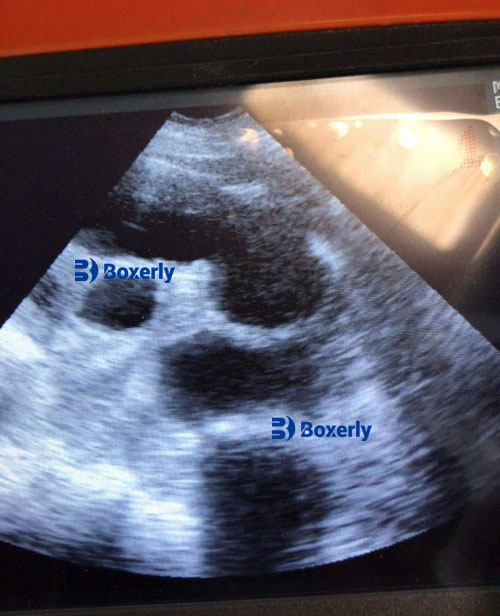
Applications of Transvaginal Ultrasound in Cows
Transvaginal ultrasound has revolutionized reproductive management in bovine herds. Its core applications include:
1. Oocyte Pick-Up (OPU)
TVUS is the gold standard for OPU — a procedure in which follicles on the ovaries are aspirated under real-time ultrasound guidance to collect oocytes. These oocytes are then matured and fertilized in the lab (in-vitro fertilization). OPU can be performed on both pregnant and non-pregnant cows, including those with superior genetics.
2. Follicle Monitoring
Accurate measurement and assessment of follicular development help determine the optimal time for artificial insemination (AI) or embryo collection. This monitoring ensures synchronization protocols are effective and improves conception rates.
3. Cystic Ovary Diagnosis
Cows with abnormal estrous cycles may have ovarian cysts — either follicular or luteal. TVUS allows direct evaluation of these cysts, distinguishing between types, and guiding treatment strategies such as hormone therapy or aspiration.
4. Assisted Reproductive Techniques (ART)
Embryo transfer, IVF, and other ART procedures rely heavily on high-precision imaging. TVUS ensures the reproductive tract is in optimal condition for embryo implantation or oocyte retrieval.
5. Reproductive Research
Transvaginal ultrasound is an essential tool in bovine reproductive research, especially in studies involving folliculogenesis, ovarian reserve, hormonal treatments, and superovulation protocols.
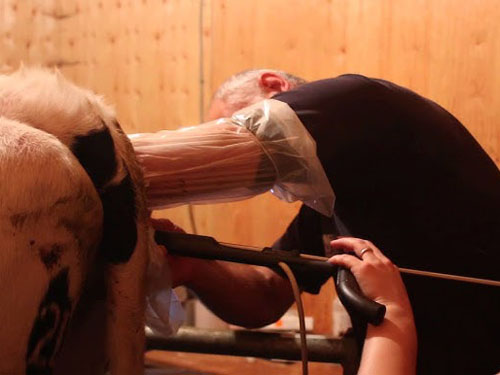
How a Transvaginal Ultrasound is Performed
Performing a transvaginal ultrasound in cows requires a combination of skill, appropriate restraint, and specialized equipment. Below is a step-by-step outline of the procedure:
Step 1: Animal Preparation and Restraint
The cow is typically placed in a chute or restraining device to minimize movement. Sedation is usually not required, but good handling practices reduce stress and improve success rates.
Step 2: Cleaning and Disinfection
The perineal area and vulva are thoroughly cleaned with antiseptic solution. A sterile probe cover is placed on the ultrasound transducer to maintain hygiene.
Step 3: Probe Insertion
The lubricated transvaginal probe is gently inserted into the vaginal canal and positioned near the cervix. The probe is angled dorsolaterally to approach the ovary.
Step 4: Imaging and Aspiration (if needed)
The real-time ultrasound screen displays the ovarian structures. If OPU or follicular aspiration is being performed, a needle is guided through the aspiration channel to collect follicular fluid and oocytes.
Step 5: Post-Procedural Care
The cow is monitored briefly after the procedure. In most cases, recovery is immediate and uneventful.
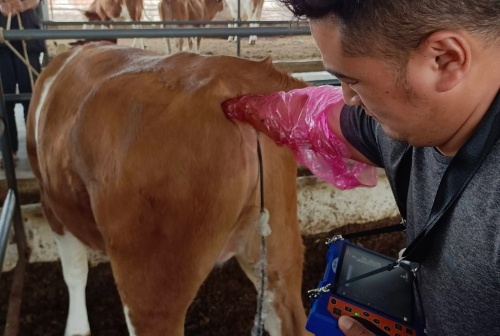
Advantages of Transvaginal Ultrasound for Cows
Transvaginal ultrasonography offers several important advantages over other reproductive diagnostic methods:
1. High Resolution and Accuracy
By avoiding interference from the rectal wall, TVUS provides clearer and more detailed images of the ovaries and uterine structures.
2. Real-Time Visualization
The ability to visualize follicles and guide needles in real-time enhances the precision of OPU and diagnostic procedures.
3. Minimally Invasive
Though it involves probe insertion, TVUS is less invasive than surgical oocyte retrieval and does not require general anesthesia.
4. Repeatability
TVUS can be safely performed multiple times on the same cow, which is particularly valuable in donor animals undergoing repeated aspirations.
5. Better IVF and Breeding Outcomes
Improved oocyte retrieval rates and better assessment of ovarian function lead to higher IVF success rates and more efficient breeding programs.
Limitations and Considerations
Despite its many benefits, transvaginal ultrasound also has limitations:
-
Specialized Training Required: Performing TVUS requires experience and training in bovine reproductive anatomy and ultrasound operation.
-
Cost of Equipment: High-quality ultrasound systems and OPU setups can be costly for small-scale farms.
-
Risk of Infection: Without proper hygiene and sterile technique, there is a risk of introducing infection into the reproductive tract.
-
Not Suitable for All Conditions: In cases of extreme uterine infection or vaginal abnormalities, TVUS may be contraindicated.
Choosing the Right Ultrasound System
When selecting an ultrasound machine for transvaginal use in cattle, consider the following features:
-
High-frequency probe compatibility (5–10 MHz)
-
Compact, durable design for field use
-
Optimized reproductive imaging presets
-
Needle guide support for OPU procedures
-
Battery operation for mobile environments
The BXL-DB20, for example, is a multi-functional veterinary ultrasound system designed specifically for OPU and IVF applications in cows, goats, and sheep. Its advanced imaging capabilities, ergonomic probe design, and reliable vacuum aspiration integration make it a preferred choice among veterinary reproduction specialists.
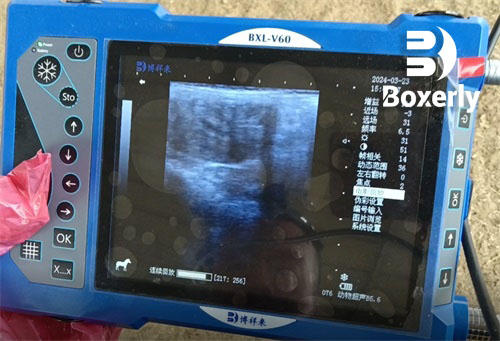
Best Practices for OPU Using TVUS
To ensure optimal outcomes during OPU and transvaginal ultrasound, follow these best practices:
-
Use follicular wave synchronization: Hormonal synchronization protocols help concentrate follicular development, improving the number and quality of oocytes retrieved.
-
Maintain strict sterility: Always use sterile gloves, sheaths, and instruments to prevent reproductive tract infections.
-
Monitor donor health: Ensure cows are in good nutritional and metabolic condition before attempting OPU.
-
Track ovary response over time: Record follicular response to superovulation or synchronization for ongoing reproductive management.
-
Collaborate with IVF labs: Coordinate closely with the lab to ensure timely transport and processing of oocytes.
Conclusion
Transvaginal ultrasound is a powerful reproductive tool that enhances diagnostic precision, improves IVF success rates, and supports advanced breeding strategies in cattle. From oocyte retrieval to cyst diagnosis and follicular monitoring, its role in bovine reproduction is indispensable for progressive farms and veterinary practices alike.
As the livestock industry continues to integrate biotechnology and reproductive science, transvaginal ultrasonography will remain at the forefront of innovation. By investing in the right equipment, training, and protocols, farms can unlock the full potential of their genetic resources — leading to healthier herds, improved productivity, and greater profitability.


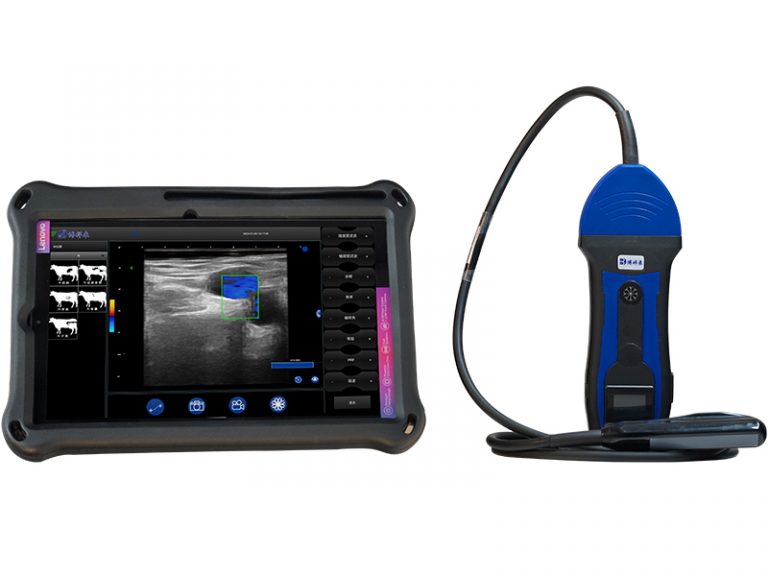



Ich bin durch Zufall auf euren Artikel gestoßen und genau sowas suche ich gerade. Wir arbeiten auf einem Milchviehbetrieb in Bayern mit etwa 120 Kühen und möchten in Zukunft gezielter arbeiten, vor allem was die Trächtigkeitskontrolle angeht. Bisher läuft alles noch recht manuell, aber das kostet Zeit und Nerven. Der Artikel hat viele Fragen geklärt. Gibt es eine Möglichkeit, das Gerät auch direkt hier in Deutschland zu beziehen? Wäre über Infos zum Preis und Versand dankbar. Wir möchten bald investieren.